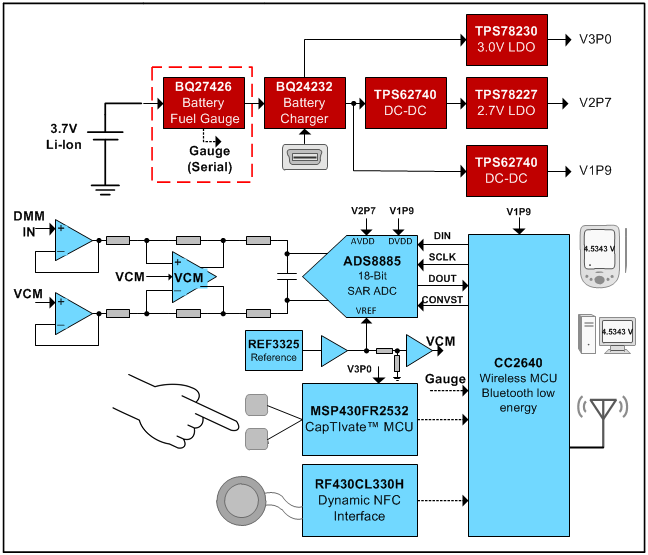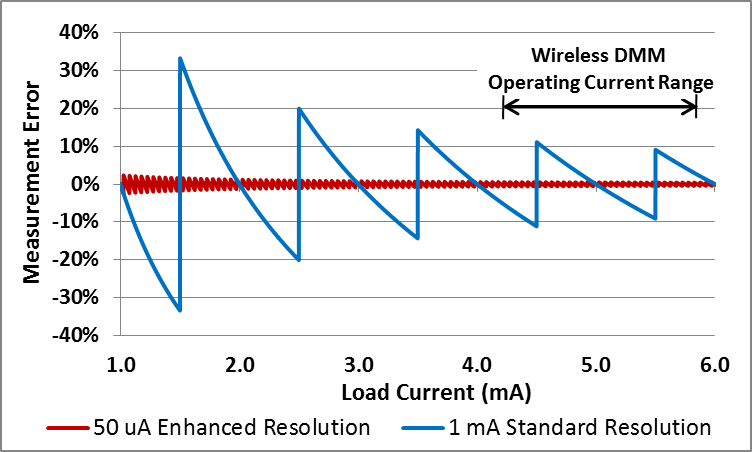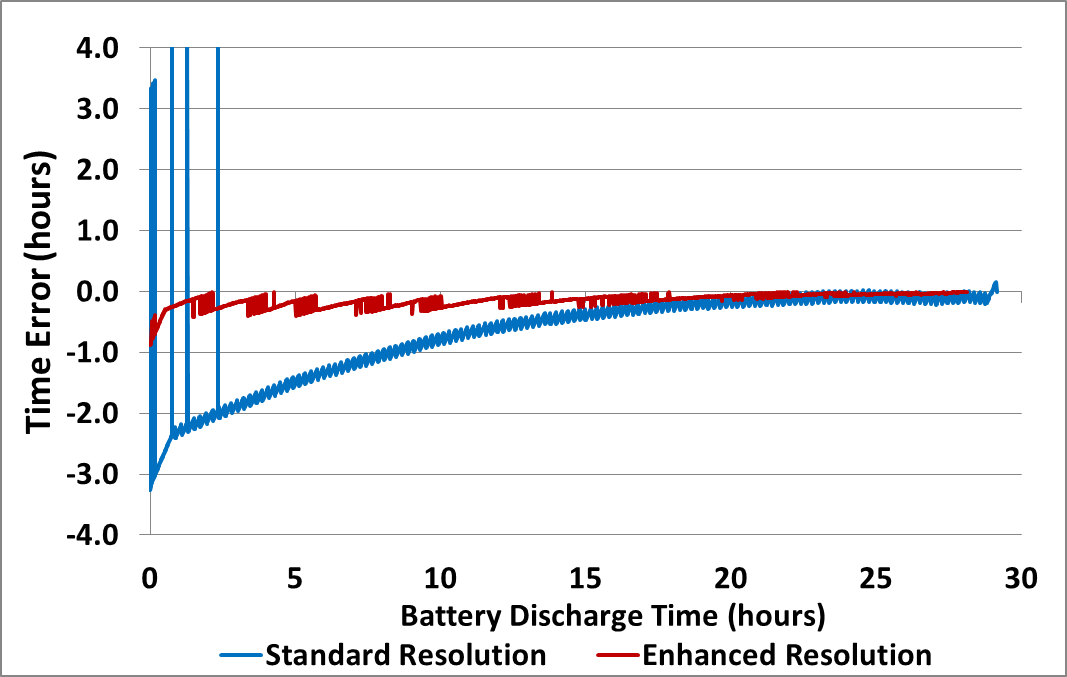SSZTA71 may 2017 BQ27220 , BQ27426
Whether designing ultra-low-power portable handheld devices or remote wireless battery-powered sensor nodes, the need to accurately measure, predict and report battery state-of-charge, battery health and remaining device operating time is becoming increasingly important in numerous applications.
For example, many Internet of Things (IoT) applications necessitate the deployment of a reliable network of interconnected, ultra-low battery-powered devices. More specifically, industrial field instruments and data acquisition (DAQ) systems deployed in and outside of factories use remote monitors to sense and report information to a host system in various environmental and operating conditions. Accurate state-of-charge and state-of-health monitoring of a remote instrument battery is critical to achieve and maintain reliable IoT networks.
New technologies such as TI’s advanced sensor and low-power connectivity components are enabling manufacturers to design wireless battery-powered systems, dramatically improving reliability and performance while reducing deployment complexity and cost. TI’s battery management portfolio consists of numerous products used to ensure efficient, reliable and proper monitoring and operation of such systems.
TI’s bq27426 and bq27220 battery fuel gauges, for example, require minimal user configuration and system microcontroller (MCU) firmware development. Although the standard configuration of these products targets higher-current and higher battery-capacity applications such as smart phones, they can also support lower-current applications, as explained in the application note, “Enhanced Resolution Gauging for Low Current Applications Using Scaling”.
Enabled by TI’s SimpleLink™ ultra-low-power wireless MCU platform, the Enhanced Accuracy Battery Fuel Gauge Reference Design for Low Power Industrial IoT Field Metering uses the Wireless IoT, Bluetooth® Low Energy, 4 1/2 Digit, 100kHz True RMS Digital Multimeter Reference Design (Figure 1 shows its block diagram) to demonstrate how the bq27426 fuel gauge accuracy and performance can be enhanced in low-current applications.
 Figure 1 Wireless DMM Block Diagram
Figure 1 Wireless DMM Block DiagramThis performance improvement is achieved by increasing the bq27426 current-measurement resolution through appropriate scaling of the external current-sense resistor and various bq27426 battery-profile parameters. In the case of this enhanced accuracy fuel gauge reference design, the resolution was changed from 1mA to 50µA by replacing the standard 10mΩ current-sense resistor with a 200mΩ resistor. Figure 2 illustrates the current-measurement accuracy improvement of a 50µA configuration compared with a standard 1mA resolution solution.
 Figure 2 Resolution Measurement Error
Figure 2 Resolution Measurement ErrorThis improved current-measurement accuracy results in better system fuel gauging accuracy and performance. For example, Figure 3 shows the remaining time error of both resolution configurations as the wireless DMM battery transitions from a fully charged state (0 hours) to a fully discharged state (~28 hours).
 Figure 3 Remaining Time Error
Figure 3 Remaining Time ErrorThese plots highlight the significant improvement in remaining time estimations associated with the enhanced resolution configuration. This is particularly evident where the standard resolution configuration crosses a 1mA resolution boundary as indicated by the spurs in the early hours of the discharge cycle. Also, the performance delta will become even more significant in applications requiring even lower system load currents.
In summary, simple resistor and fuel gauge parameter scaling can be used to optimize IoT, field metering, and other ultra-low power systems requiring accurate state-of-battery measurements. So, the next time your low-power application requires refueling, make sure you use one of TI’s battery gauge products to avoid running out of gas!
Additional Resources:
- Click here to learn more about battery gauging solutions
- View more Test and Measurement applications and designs
- Learn more on Enhanced Resolution Gauging for Low Current Applications Using Scaling